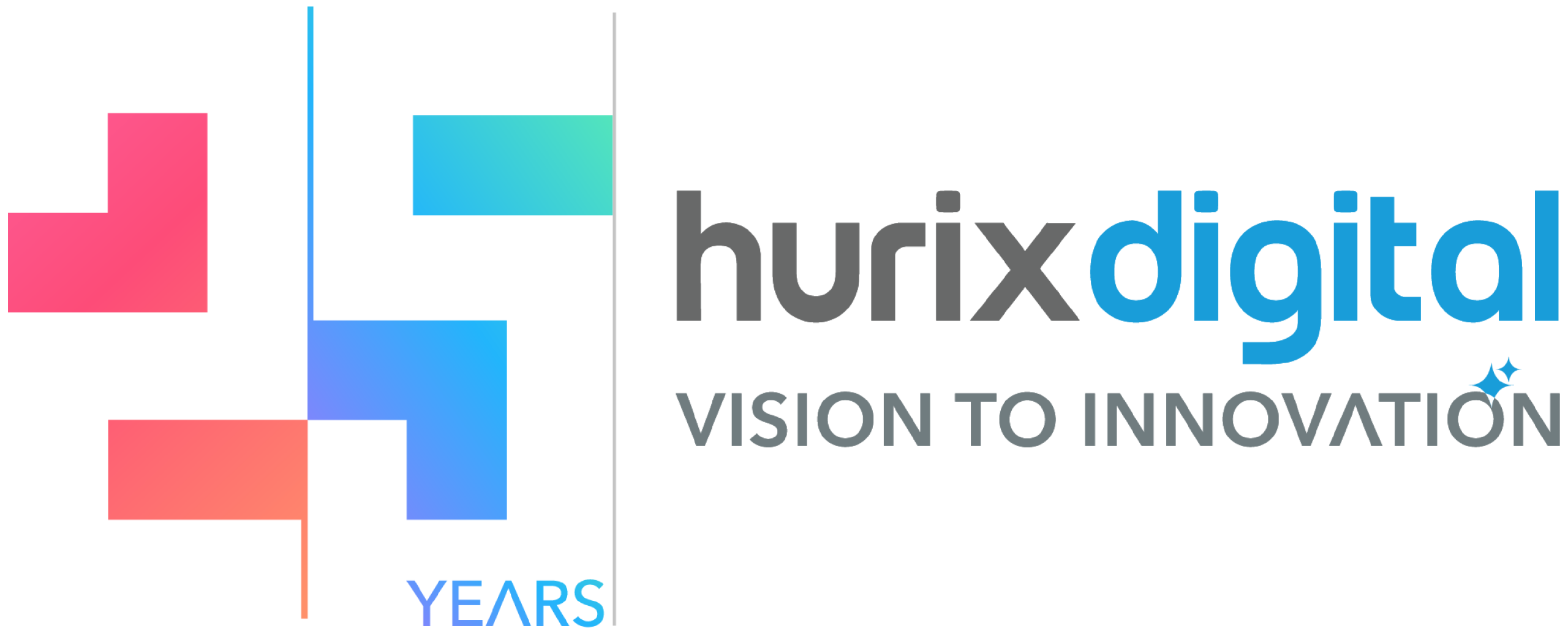
Building AI Applications That Scale Without Breaking Your Business
Summarize with:
Every boardroom these days unanimously buzzes: “We need AI.” Yet only a few executives can explain what they need it for, how they will measure success, or why previous attempts quietly disappeared. The gap between the desire for AI and reality has never been wider.
The conversation needs reframing. Success comes from applying AI effectively rather than simply having it. It comes from using AI for a specific business problem with measurable outcomes. The distinction seems subtle until you count the casualties of confused implementation. Organizations that grasp this difference are able to make better use of AI.
Table of Contents:
- How to Measure Tangible ROI for AI Applications?
- What Are Common Pitfalls in AI Application Deployment?
- How to Ensure Data Quality and Governance for AI Success?
- Addressing Ethical Concerns and Building Trust in AI Applications?
- What Talent Strategies Are Vital for Successful AI Adoption?
- Scaling AI Applications: How to Avoid Technical Debt?
- Integrating AI Applications With Legacy Systems: Best Practices?
- Mitigating AI Application Risks: Cyber, Compliance, Reputational?
- Prioritizing AI Initiatives: How to Align With Business Goals?
- How to Future-Proof AI Applications Against Rapid Change?
- A Final Word
How to Measure Tangible ROI for AI Applications?
Measuring the tangible return on investment (ROI) for AI applications, well, that’s often the sticking point, isn’t it? ROI calculations for AI applications confound even the traditional financial models. The investment happens today, but returns emerge through compound effects over the years. CFOs trained on predictable depreciation schedules struggle with exponential value curves and indirect benefits.
Smart measurement starts with baseline establishment. Before an AI-powered customer service application launches, document current resolution times, satisfaction scores, and agent productivity. Use actual measurements rather than estimates. Value often hides in prevention rather than production. Traditional ROI focused on inspection cost reduction and modest savings. The real value? Avoided recalls, preserved reputation, and reduced warranty claims. These preventions don’t appear on quarterly reports, but their absence would dominate annual statements. Multi-dimensional scorecards capture AI’s true impact better than single metrics. Financial returns matter, but so do strategic advantages.
Time horizons require adjustment for AI economics. Quarter-to-quarter measurements show costs without benefits. Year-three assessments reveal whether patience paid off. Organizations demanding immediate returns from AI applications join the graveyard of abandoned initiatives.
What Are Common Pitfalls in AI Application Deployment?
AI deployments that fail share common causes of death. Technical elegance rarely appears on the death certificate. Human factors dominate the autopsy reports.
Scope creep kills through suffocation. What begins as “AI for better customer segmentation” mutates into “AI for everything customer-related.” Each addition seems logical in isolation. The aggregate becomes unmanageable. A retail chain began by predicting inventory for a single product category. Eighteen months later, they were attempting to AI-optimize store layouts, staff scheduling, and customer journey mapping—simultaneously. None succeeded. Their competitor, who focused on inventory management, reduced stockouts by half.
The shiny object syndrome claims numerous victims. Organizations chase whatever AI capability made headlines last week. Natural language processing gives way to computer vision, abandoned for predictive analytics. Each pivot restarts the learning curve. Stakeholder alignment failures create organizational antibodies against AI. When marketing deploys AI that changes sales processes without consultation, resistance follows. IT builds infrastructure without understanding business needs. Operations modifies workflows that impact customer service. A hospitality company’s booking optimization AI failed because revenue management, operations, and marketing each interpreted “optimization” differently. The AI worked well, yet failed to meet actual needs.
Both overconfident and under-resourced fall victim to the “build vs buy” trap. Building custom AI applications seems cheaper until you price ongoing maintenance, updates, and talent retention. Buying promises faster deployment until customization requirements emerge. Commercial platforms with custom integration layers are the winning approaches.
How to Ensure Data Quality and Governance for AI Success?
Data quality determines AI application outcomes more than algorithm sophistication. Yet organizations invest ten times more in AI platforms than in data preparation. The predictable result? Expensive systems that produce unreliable outputs.
Quality begins with definition, not detection. What constitutes “good” data varies by application. Customer churn prediction tolerates incomplete demographic data but demands accurate transaction history. Inventory forecasting needs precise historical sales, but it can estimate seasonal factors.
The ownership paradox complicates quality maintenance. Who owns customer data when marketing collects it, sales enriches it, and service uses it? AI applications rely on unified data, but organizations often manage it in isolated systems. Successful implementations create data product managers who take ownership of end-to-end data quality. These folks become accountable for the whole pipeline, regardless of which system churns out the data.
Quality monitoring requires automation at AI scale. Manual checks that worked for monthly reports fail for real-time applications. Smart organizations build quality assessment into data pipelines. When anomalies appear, systems alert before AI applications consume corrupted inputs.
Addressing Ethical Concerns and Building Trust in AI Applications?
Ethics in AI goes way beyond ticking compliance boxes. Trust builds slowly and destroys instantly. Organizations learning this through scandal rather than strategy pay with more than their reputation.
Transparency requires more than just simple disclosure. Telling customers “our AI uses gradient boosting algorithms” satisfies no one. Explaining “we predict your preferences based on past purchases” creates a better understanding. Bias creeps in through historical data rather than malicious intent. Well-meaning organizations discover their AI applications discriminate because yesterday’s decisions shape tomorrow’s predictions. In the platform of one of our education sector clients, we found that AI was favoring candidates with certain writing styles from certain geographies. The fix required rebuilding training data from performance outcomes rather than enrolment decisions.
Ethical frameworks must be operational. Principles posted on websites mean nothing without implementation mechanisms. It is highly recommended that technology companies place ethicists in development teams. Another requires “fairness impact assessments” before deployment. These processes slow initial development but prevent reputation-destroying discoveries later. The cost of ethical AI pales against the price of unethical AI exposed.
What Talent Strategies Are Vital for Successful AI Adoption?
The talent war for AI expertise misses the bigger battle. Pure technical skills matter less than hybrid capabilities. When organizations build impressive teams without translators, integrators, and evangelists, they seldom achieve their goals.
Professionals with both technical and business knowledge drive AI success. They’re rarer and more valuable than pure technologists. A supply chain company we were talking to had promoted this warehouse manager who learned Python just for fun. She now leads their AI initiatives, outperforming hired experts because she understands both algorithms and operations.
Internal cultivation beats external acquisition for sustainable talent strategies. Hiring senior AI talent works for kick-starting initiatives. Long-term success requires growing capabilities organically. Organizations that train existing employees in AI applications report higher project success rates than those relying purely on external hires. Domain knowledge plus new technical skills outperforms technical skills seeking domain understanding.
Team composition determines the outcome more than individual brilliance. The best AI teams include skeptics alongside enthusiasts. Retention strategies must evolve for AI talent dynamics. Traditional incentives like salary, bonus, and promotion matter, yet fall short on their own. AI professionals value learning opportunities, impactful projects, and modern tools. One client retained their AI team through the great resignation phase by guaranteeing 20% time for experimentation and conference attendance. Their competitors, who offered only salary increases, watched talent walk away.
Scaling AI Applications: How to Avoid Technical Debt?
It’s funny, isn’t it? So much focus goes into the dazzling algorithms, the clever architectures that power AI. But the real headaches, the kind that can bring an entire project to its knees months or years down the line, rarely stem from a slightly suboptimal neural network. More often than not, it’s the plumbing. It’s the unglamorous, overlooked stuff that quietly accumulates as technical debt. Technical debt in AI compounds faster than traditional software. Today’s shortcut becomes tomorrow’s rebuild. The rush to deploy accumulates obligations that must eventually be repaid with interest.
Architecture decisions made for pilots haunt production systems. A recommendation engine worked brilliantly for 10,000 products. At 100,000 products, response times made it unusable. The quick fix? More servers. The real problem? An architecture that couldn’t scale efficiently. Rebuilding costs five times the original development.
Documentation debt proves especially toxic for AI applications. Models without explanation become black boxes when creators leave. One of our clients discovered that their demand forecasting AI used undocumented feature engineering. When accuracy dropped, nobody understood why. When we did reverse engineering, we found that the model was adjusted for local holidays. I mean holidays that had shifted dates.
Modular design helps you avoid those massive, tangled disasters. Successful AI applications separate data ingestion, processing, model execution, and result delivery. When components couple tightly, changes cascade catastrophically.
Version control extends beyond code to data and models. Traditional software development tracks code changes. AI applications must version training data, model parameters, and deployment configurations. Without this trinity of tracking, reproducing problems becomes impossible.
Integrating AI Applications With Legacy Systems: Best Practices?
Legacy systems and AI applications speak different languages. One talks in batch files and fixed formats. The other thinks in streams and probabilities. Merging these two goes beyond installing connectors; it asks designers to understand each other’s logic, goals, and limitations..
Wrapper strategies preserve legacy investments while enabling AI capabilities. Rather than replacing core systems, smart organizations build AI layers around them. Data extraction without disruption becomes the first challenge. Legacy systems weren’t designed for real-time AI consumption. One insurance company’s policy system required overnight batch exports. Their solution? Building a change data capture layer that mirrors updates to an AI-friendly database. The legacy system continues unchanged while AI applications access near-real-time data.
Hybrid architectures bridge old and new realities. Pure replacement strategies fail because legacy systems encode decades of business logic. Pure preservation fails because legacy limitations constrain AI potential. Winners create transition architectures where AI handles new capabilities while legacy manages core operations. Over time, AI assumes more responsibility as confidence grows.
Testing strategies must accommodate legacy unpredictability. Modern AI expects consistent APIs and reliable data. Legacy systems offer neither. Successful integrations build resilience through extensive error handling and graceful degradation. When a utility company’s billing system goes offline for maintenance, its AI demand forecasting switches to cached data rather than crashing.
Mitigating AI Application Risks: Cyber, Compliance, Reputational?
AI applications create new risk categories while amplifying existing ones. Traditional risk frameworks strain under AI’s unique threat profile. Security teams trained on protecting data struggle with protecting decisions.
Model manipulation represents an emerging attack vector. Adversaries can corrupt an AI’s learning process without ever stealing data. Then, compliance complexity multiplies with AI opacity. Regulations demand explanations that AI struggles to provide. “Show your work” becomes existential when neural networks process millions of parameters. A lending institution faced regulatory action not for discriminatory outcomes but for its inability to explain its AI’s decisions.
Reputation risks hide in edge cases. AI applications performing well on average can still create viral disasters through outlier decisions. Like for example, an airline’s pricing AI can work 99.9% of the time. The remaining 0.1% time? Charging $20,000 for routine flights during weather delays. Social media will step in, and its foot soldiers will amplify these edge cases. That’s why smart organizations build circuit breakers for anomalous outputs.
Prioritizing AI Initiatives: How to Align With Business Goals?
The AI initiative graveyard fills with technically successful projects that missed business relevance. Alignment requires more than steering committees and strategy documents. It demands continuous calibration between AI capabilities and business needs.
Portfolio approaches balance risk and return across AI initiatives. High-risk, high-reward projects need offsetting conservative applications. We advised one bank to run three AI tracks: efficiency plays (automating existing processes), enhancement plays (improving current capabilities), and transformation plays (creating new possibilities). This mix ensures steady returns while pursuing breakthroughs.
Business sponsorship determines priority more than technical readiness. AI initiatives with engaged business leaders succeed at twice the rate of IT-led projects. A manufacturing company requires each AI initiative to have an operations sponsor who owns outcomes. This filter eliminates science projects disguised as business solutions.
Regular reassessment prevents priority drift. Business contexts change faster than AI development cycles. Quarterly reviews should challenge continued relevance, not just technical progress.
How to Future-Proof AI Applications Against Rapid Change?
Future-proofing AI applications feels like a contradiction when the “future” shows up every quarter. Yet architectural and organizational choices create resilience or brittleness. The difference determines whether applications evolve or expire.
Abstraction layers insulate business logic from technology churn. Well-designed AI applications separate “what” from “how.” When natural language processing advances, only the processing layer changes.
Learning systems adapt better than trained systems. Traditional AI learns once and then deploys. Future-proof applications continue learning from new data. Ecosystem participation accelerates adaptation. Isolated AI applications miss the innovation happening elsewhere. Organizations contributing to open-source projects, participating in research communities, and sharing non-competitive insights evolve faster. A healthcare AI company open-sourced its data quality tools. The community improvements they received back exceeded their internal development capacity.
Organizational learning matters more than technical architecture. Teams that experiment, fail fast, and share lessons build adaptive capacity. One financial services firm runs monthly “failure forums” where AI teams share what didn’t work. These sessions generate more innovation than success celebrations. Future-proofing isn’t about predicting change—it’s about creating systems and cultures that thrive on change.
A Final Word
Hundreds of brilliant AI projects have failed, millions have been invested, and teams have built technical marvels that no one wanted. These stories play out in boardrooms everywhere, possibly including yours, rather than staying locked away as distant cautionary tales. The difference between joining them and avoiding them? Working with partners who’ve already learned these expensive lessons.
Hurix Digital brings proven AI expertise to educational technology and corporate training. Our Dictera platform shows how AI can streamline assessment creation while maintaining quality and compliance. We understand the integration nightmares, the talent gaps, and the measurement challenges because we’ve solved them.
Connect with us now to learn more.
Summarize with:

Vice President & SBU Head –
Delivery at Hurix Technology, based in Mumbai. With extensive experience leading delivery and technology teams, he excels at scaling operations, optimizing workflows, and ensuring top-tier service quality. Ravi drives cross-functional collaboration to deliver robust digital learning solutions and client satisfaction
 Upcoming Masterclass | Build an Army of Brand Evangelists using Training & Development | November 20th, 8:30 AM PDT | 11:30 AM EDT | 10:00 PM IST
Upcoming Masterclass | Build an Army of Brand Evangelists using Training & Development | November 20th, 8:30 AM PDT | 11:30 AM EDT | 10:00 PM IST


